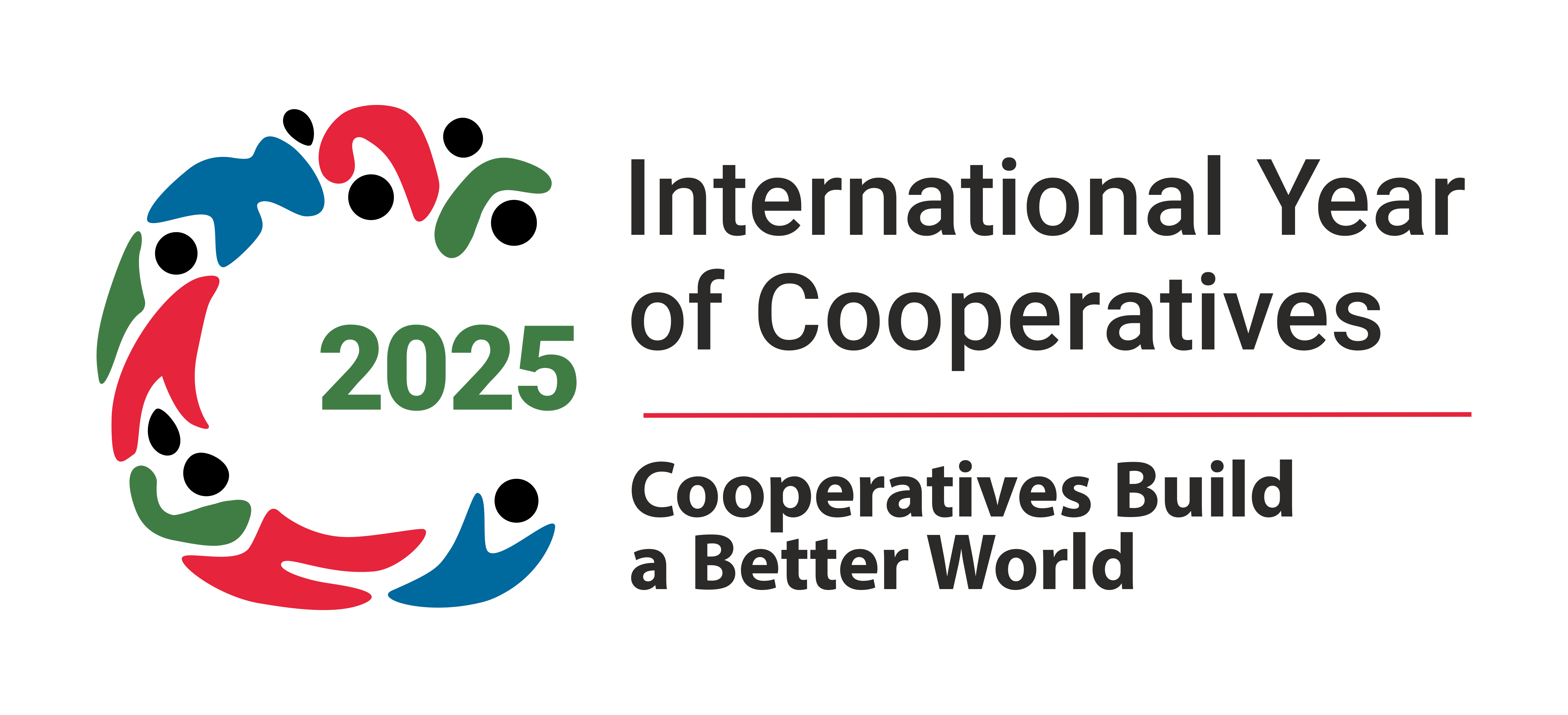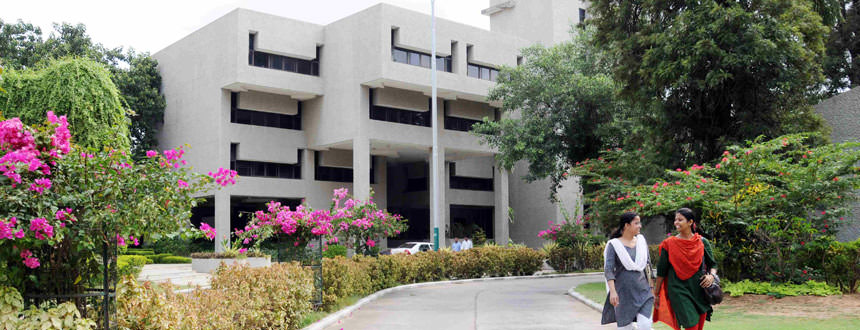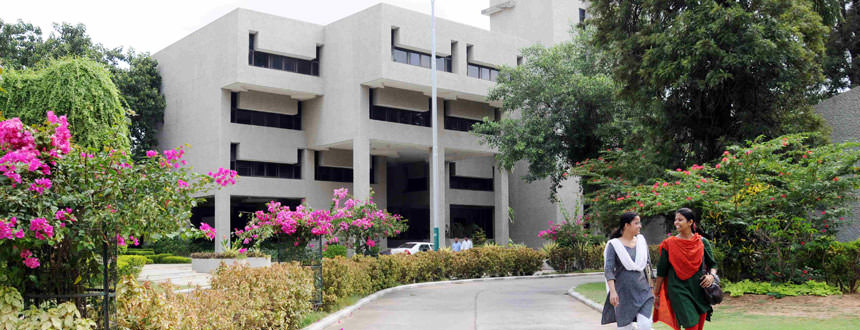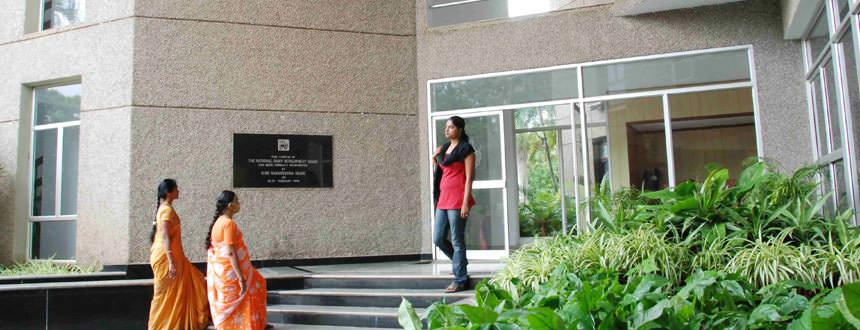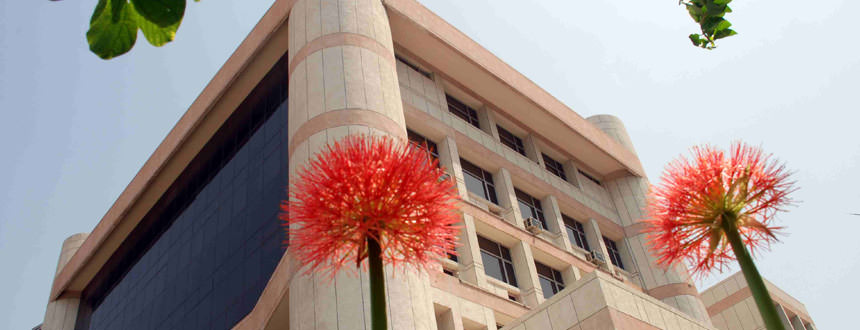Address by the Chief Guest, Shri Dilip Rath, Chairman, NDDB at Twenty First Convocation Tamil Nadu Veterinary and Animal Sciences University, Chennai -10th December, 2019
Hon'ble Chancellor and Governor of Tamil Nadu Thiru. Banwarilal Purohit Ji, Hon'ble Pro-Chancellor and Minister for Animal Husbandry, Government of Tamil Nadu, Thiru Udumalai K. Radhakrishnan, distinguished academician and Vice Chancellor of TANUVAS, Dr. C. Balachandran, Members of Board of Management, Members of Academic, Research and Extension Education Councils, Graduates of the year, Faculty Members, Representatives of Media, Dear Students and Scholars, Ladies and Gentlemen.
I sincerely thank the University for inviting me to deliver the 21st Convocation Address. It is indeed a great honour for me to share some of my thoughts with the veterinarians and animal sciences fraternity, especially with the graduating students, on this occasion in the context of the evolving livestock sector in our country.
First of all, I would like to convey my hearty congratulations to all the students and research scholars who have successfully completed their studies and are receiving their degrees today. It is indeed a great moment of pride for the graduating students, their parents and the faculties who have mentored them to move out from the portals of the University to a world full of excitement and opportunities to test their knowledge and skills.
The glorious history of this premier veterinary and animal science institution is well known. It is indeed a matter of pride for all those who have been associated with this University since its establishment 30 years ago, for having contributed to enrich the body of knowledge in veterinary science to benefit the livestock farmers in the State and the country. Since then, it has emerged as one of the leading institutions in the country in the field of research, education and extension activities in veterinary and animal sciences. Graduates from TANUVAS are contributing immensely for the growth of livestock sector, rural development and nation building, be it dairying, small ruminants, poultry, pet animals etc. They have made a mark not only for themselves, but for the institutions they have served, be it in the government sector, research/education institutions, non-governmental organisations, corporates and even as entrepreneurs. All this has been possible due to the efforts put in by the faculty and all the employees to create an enabling and vibrant teaching and learning environment and the high standards of research and teaching. It is due to the tall stature of this University that it has received as many as 38 projects from various national, state and private agencies with a total outlay of Rs. 89.04 crore during 2018-19. This is a testimony of TANUVAS’s reputation, strength and capabilities.
In India, livestock sector not only forms the backbone for providing food and nutrition in the form of milk, eggs and meat, but also is a source of livelihood and sustainable employment generation. This sector contributes significantly in empowerment of rural women and for protection of environment. The sector will play an important role in achieving the ambitious goal of Government of India to double the farmers’ income by 2022.
Various programmes like Operation Flood, the world’s largest dairy development programme, planned and implemented by NDDB under the leadership of Dr Verghese Kurien – ‘The Father of White Revolution’ between 1970 and 1996 and the National Dairy Plan currently being implemented by Dairy Board unleashed the dairy potential of our country and transformed our dairy industry. Milk production, which had remained stagnant at 22 million tonnes in the sixties and seventies has increased to about 187.7 million MT in 2018-19. Milk production in our country is growing at an annual growth rate of over 6 per cent since the last 6 years. The daily per capita milk availability has also increased from 110 grams in 1973-74 to 394 grams in 2018-19.
Dairy cooperatives (about 190,000 village dairy cooperative societies with a membership of about 17 million milk producers of which 30 per cent are women members) primarily representing small and marginal farmers and the landless have played a big role in making India the highest milk producer in the world.
So far as poultry sector is concerned, India is the third largest egg producer in the world with a production of 95.2 billion eggs in 2017-18 with a growth rate of 6 per cent and per capita availability of 74 eggs per year; and the fourth largest chicken producer in the world, with production of 3.77 million tonnes in 2017-18 – per capita availability being 3.35 kg per year. Considering the growing demand for poultry products, there is a need to promote more commercial and intensive poultry farms, both for broiler and layer, and also promote rural backyard poultry in a big way. Health conscious younger generation is prepared to pay a better price for poultry products which are safe and healthy. There is huge scope to develop a supply chain connecting backyard poultry growers with urban markets. What is needed is development of robust disease resistant breeds suitable for backyard poultry, poultry feed formulations based on locally available resources and veterinary support to rural backyard poultry growers along with training, extension and marketing support.
As per FAO’s population projection, India is expected to be the world’s most populous country –1.7 billion by 2050, majority of them belong to the middle income group. Feeding such a huge population would be an enormous challenge.
With nearly 300 million cattle and buffalo, 223 million goat and sheep and 852 million poultry population, India has perhaps reached a peak in terms of animal population, which our resources can support at the current level of technology. The dangers of climate change is looming large on the horizon threatening the sustainability of our livestock production system. Livestock production is jeopardised due to high temperature and extreme climatic conditions resulting in decreasing growth, reduced reproductive performance, milk production, meat production and animal health risks. Therefore, adaptation and mitigation of the detrimental effects of extreme climatic events would play an important role to counter the impact of climate change on livestock production. Hence, it is time to revisit our strategies and develop appropriate animal husbandry practices including designing breeding programmes to evolve climate resilient livestock breeds. Reduction of pasture lands and shrinking availability of land for fodder and forage production, reduction in availability of potable water for animals along with extreme weather conditions due to climate change, would mean that the increased production of animal origin products like milk and eggs have to come from productivity increase rather than numbers. Hence the emphasis has to be on improving reproductive efficiencies, better disease management and scientific feeding.
It is well known that indigenous livestock and poultry breeds will be least affected by climate change as they are most hardy and robust. Due to their unique characteristics of heat tolerance, tick and pest resistance, resistance to diseases and the ability to thrive under extreme climatic conditions, these indigenous breeds have to be conserved and developed. In this context, TANUVAS’s initiative to establish a “Bargur Cattle Research Station” at Bargur and Kangayam, Pulikulam and Alambadi cattle research centres in the respective native tracts to conserve and develop these breeds is commendable.
In view of the challenges mainly in respect of increasing demand supply gap and climate change, veterinary and animal science fraternity and particularly researchers and academicians have to develop and adopt innovative, efficient and cutting edge technologies in the livestock sector. It is necessary to introduce scientific livestock rearing practices which are cost effective and most suited to our conditions. I urge the graduating students to be sensitive to these challenges and work towards finding smart and simple technologies suited to our conditions to meet these challenges.
I would like to focus on 3 broad areas which require the close attention of veterinarians and animal scientists.
First is animal health. Animal diseases are increasingly becoming a cause of concern, in particular those that have the potential to spread across borders or from animals to humans (zoonotic diseases). Many of these diseases, which are widely prevalent in India, are not only fatal, they are a threat to human health and can drastically reduce productivity of animal origin products. Recent reports of occurrence of Lumpy Skin Disease in cattle and thousands of birds dying in Sambhar Lake in Rajasthan are disturbing examples. This requires preparedness to promptly identify the causative agents, restrict movement of animals and animal products, safely dispose the carcass and take prophylactic measures. I believe, enforcement of ‘Prevention and Control of Infectious and Contagious Diseases in Animals Act 2009’ by the State Governments will greatly help in control and eradication of diseases in animals.
It has been adequately demonstrated that the prophylactic cost-effective vaccination is the best available method for preventing economic losses in livestock sector. With systemic vaccination and active surveillance, Rinderpest could be eradicated from not only this country but globally. Currently, we are implementing an ambitious national programme to control Foot and Mouth Disease and Brucellosis through a nationwide vaccination campaign. This National Animal Disease Control Programme will be world’s largest such programme. Hence, the quality of vaccines and incorporation of appropriate vaccine strain would be very essential where role of academic institutions and industries would be significant. Further, there is a need to develop new generation vaccines like thermostable or marker vaccines. Indian Immunologicals, Hyderabad the largest animal vaccine manufacturer in India - a wholly owned subsidiary of NDDB – will welcome collaborative research in these areas on mutually agreeable terms.
While we have adequate number of animal disease diagnostic laboratories, most of them do not have adequate physical and financial resources to deliver the diagnosis accurately and promptly. Unfortunately, most diagnostic laboratories in our country do not have adequate and robust quality management systems like NABL or ISO accreditations. The R&D laboratory under NDDB’s management at Hyderabad is accredited both with NABL and ISO. NDDB will be happy to support diagnostic laboratories which propose to implement such quality management systems.
Further, there is a need to develop simple disease diagnosis kits which can be used at the farmer’s door step to undertake quick diagnosis and initiate immediate treatment and disease control measures.
Another important area of concern is antimicrobial resistance (AMR) which is emerging as a silent pandemic. Multidrug-resistant strains have been found to evolve due to un-checked antimicrobial usage in both human and livestock health. Transfer of resistant strains from human to animal and vice versa have been reported. The situation is more serious in developing countries like India, where huge burden of infectious diseases is correlated with presence of multidrug resistant pathogens, resulting mainly from indiscriminate use of anti-microbial agents. It needs our immediate attention.
Adoption of alternative approach for the management of common ailments of animals, especially through ethno-veterinary medicine, would probably be one of the cost-effective and practical solutions for rationalising the use of antibiotics thus minimising the probability of development of AMR.
It would not be inappropriate to mention that we are still not exploiting fully the power of information technology, especially artificial intelligence and machine learning and their possible application in areas like animal disease prediction and control as well as vector identification and control etc.
As culling of cattle is becoming socially and culturally unacceptable, we need to develop technologies that can be used to make unproductive cattle financially sustainable. NDDB is working to develop a sustainable and replicable model of using a simple low cost technology of small backyard biogas plants which use cow dung. While the methane gas is used by the household for cooking, the slurry generated is used to produce organic manure and micro-nutrient enriched liquid bio-fertiliser. This initiative has the potential to have multifarious social, economic and environmental benefits.
Animal Breeding
Artificial Insemination has been used in the country since Operation Flood, for genetic improvement of our dairy stock. Currently there are more than 50 semen stations in the country including 5 in Tamil Nadu, producing about 119 million semen doses annually. Under the first Phase of National Dairy Plan, 28 of these have been supported for strengthening and expanding the production capacity and biosecurity. 14 Progeny Testing and nine Pedigree Selection programmes are being implemented to produce disease free high genetic merit bulls of various cattle and buffalo breeds for semen production and distribution amongst the semen stations throughout the country. This programme included strengthening of three semen stations and a PT programme to select disease free high genetic merit Jersey crossbred bulls in Tamil Nadu.
Progeny and Pedigree Selection projects have put in place a performance recording system for various cattle and buffalo breeds in different parts of the country. Along with popularising AI in the breeding tracts, these projects together are now recording more than 30000 animals annually. Genetic evaluation processes have been standardised to suit smallholder conditions under these projects.
Having built the infrastructure to produce disease free high genetic merit bulls and high quality frozen semen doses, if we have to fast track genetic progress of our dairy herd, we need to focus on developing and introducing advanced reproductive technologies like (a) sex sorted semen (b) embryo transfer with in-vitro fertilisation (c) genomics and (d) other advanced technologies like cloning, synthetic gamets.
Use of genomic selection will hasten genetic progress in dairy cattle and buffaloes. NDDB has developed INDUSCHIP – a genotyping chip suitable for indigenous cattle and their crosses. Using INDUSCHIP, genomic breeding value of bulls is being estimated with greater accuracy and would be used for future selection of bulls. We have also developed a BUFFCHIP for genotyping buffaloes.
Once elite animals are identified, it is imperative to use them extensively for faster genetic gain. Frozen semen technology helps in achieving this using high genetic merit bulls whereas Embryo Transfer and In vitro Fertilization will allow maximum use of elite cows and buffaloes. To take advantage of Ovum Pick Up - In Vitro Fertilisation (OPU-IVF) technology, NDDB has established a fully equipped OPU-IVF lab with trained and skilled technicians at Anand. This lab will be used for training of professionals in the country apart from multiplication of elite germplasm.
Although we have progressed considerably in genetic improvement of our livestock through AI, PT/PS, ET, IVF, we need to develop indigenous technology for semen sexing. We also need to record other important traits like heat tolerance, disease resistance and feed efficiency in cattle to select better cattle using genomics.
Animal Nutrition
Around 70 per cent cost of milk production is on account of animal feeding. Therefore, if our milk production system is to be competitive and sustainable, it is imperative that feed given to animals is of high nutritive value and cost-effective. As our country has no law to regulate feed quality, NDDB and dairy cooperatives have developed a self-regulation mechanism and introduced Quality Mark for cattle feed and mineral mixture to ensure production and supply of good quality feed. If we have to ensure safe and healthy animal origin products, animals have to be fed with safe and good quality feed free of contaminants.
Under the first Phase of National Dairy Plan, more than 31,000 Village Level Resource Persons (LRPs) were trained and deployed for ration balancing advisory services using a software developed by NDDB. The LRPs provided ration balancing advisory services to about 2.1 million farmers for their 2.8 million milch animals in about 33,000 villages across 18 states of our country. This resulted in reduction of feed cost by Rs. 16 per day per animal and increase in milk yield by 250 ml and fat percent by 0.1 unit leading to an increase in net daily income of farmer by Rs. 26.91 per animal. This approach has been recognised globally and our efforts have been applauded. Being encouraged by this approach, Maharashtra Government has decided to initiate a ration balancing advisory programme in Vidarbha to benefit the milk producers. In Tamil Nadu, 2147 Local Resource Persons covered 1,44,096 farmers, 1,76,425 milch animals/cows in 22 districts which resulted in reduction in feed cost by Rs 23.20 per day per animal and increase in milk yield by 330 ml and fat per cent by 0.05 unit. This led to an increase in net daily income of farmer by Rs 32.80 per animal.
Biotechnological tools are already being applied in animal nutrition. Fodder crops variants that are high yielding and resistant to biotic and abiotic stress are being developed. Enzymes are being used for improving the availability of nutrients from feed and to reduce the wastage of feed and fodder. The usage of prebiotics and probiotics for improving the efficiency of rumen fermentation is gaining acceptance. Bypass techniques are being applied to deliver nutrients such as proteins, fats and immunity boosters directly to the sites of absorption.
There is a need to further develop cost-effective solutions for increasing digestibility/bioavailability and removing anti-nutritive factors from feeds, feed ingredients and agricultural residues. There is also a need to develop indigenous methods for detection of aflatoxicosis and its mitigation.
In order to ensure greater transparency, efficiency, objectivity and accountability, it is necessary to have accurate and measurable data to capture all important parameters to measure the impact of all programmes in the field of animal health, breeding and nutrition. I am happy to say that NDDB has developed a comprehensive software, namely Information Network for Animal Productivity and Health (INAPH) which is being used by the field technicians, supervisors and project managers to measure important parameters to both assess impact and have better review and monitoring of the schemes. Presently, more than 25 million animals are registered in this system covering 14.5 million farmers in about two lakh villages.
Another important area that our scientists need to work on is to develop efficient animal origin products processing technologies to bring in efficiencies in supply chain while ensuring food and feed safety. All these will assume more and more significance in the future in the context of growing consumer awareness and higher and stringent standards set by regulatory authorities.
Veterinary and animal science universities across the country need to launch new certificate and diploma courses or incorporate in their existing programmes comprehensive modules relating to modern livestock production and reproduction, advanced technologies in controlling animal diseases, feed and food safety along with a component of general management education so that the country produces future ready professionals who can contribute and cater to the industry and market requirements.
Livestock sector offers huge direct and indirect employment and income generation opportunities. This sector is undergoing great transformation and all of you, unlike your predecessors whose career choices were limited, have today many more exciting career opportunities. So, dear graduating students, I once again congratulate you and wish you a bright and rewarding future in whatever career you choose.
Thank you and Jai Hind.

